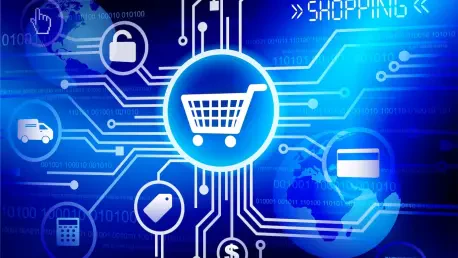As the global retail landscape undergoes significant transformation, the role of automation in reshaping operations and customer experiences cannot be overstated. Retail automation encompasses a wide array of advanced technologies, including self-checkout systems, vending machines, electronic shelf labels (ESLs), AI-powered kiosks, mobile point-of-sale (POS) devices, and robotics. These innovations are not only streamlining daily tasks but also enhancing accuracy, expediting processes, and improving the overall shopping experience for customers. The retail sector is experiencing an unprecedented surge in automation adoption, with the market expected to grow from $11.7 billion in 2024 to $30.0 billion by 2032. This remarkable expansion is fueled by several factors, including the escalating demand for convenience, rising labor costs, and the imperative need for more efficient in-store operations. Understanding the various components and dynamics of the retail automation market provides insights into the transformative potential of these technologies and the strategic adoption by retailers globally.
The Dynamics of Retail Automation Market Growth
The retail automation market is experiencing exponential growth, driven by its ability to enhance convenience and reduce operational complexities. With a compound annual growth rate (CAGR) of 12.48% over the forecast period from 2025 to 2032, automation technologies are becoming an integral part of the retail sector. One of the primary drivers behind this growth is the increasing consumer demand for convenience. Modern shoppers are keen on minimizing wait times, spurring retailers to adopt technologies that enhance the speed and efficiency of the checkout process. For instance, self-checkout terminals and mobile POS devices are increasingly being utilized to streamline customer interactions, thus improving the shopping experience.
The rising costs of labor have also contributed significantly to the interest in retail automation. Businesses are turning to automation solutions as a means to offset these rising costs while maintaining service quality. By integrating automated systems, retailers can reduce their dependence on manual labor for routine tasks, thereby lowering overall operational expenditures. Automation not only leads to cost efficiencies but also minimizes human errors in transactions and inventory management, contributing to more effective store operations.
As the demand for efficient in-store operations intensifies, retail automation’s market share continues to expand. Technologies such as AI-powered kiosks and vending machines offer a new level of service personalization, meeting consumer expectations in an age where tailored services are increasingly sought after. The ability of these systems to provide data-driven insights allows retailers to personalize promotions and optimize inventory, reinforcing profitability and customer satisfaction simultaneously.
Market Segmentation and Key Technologies
Understanding the segmentation of the retail automation market is crucial for recognizing the breadth of technologies involved and their specific applications. The market can be divided by type, component, end-user, and region, each contributing unique elements to the landscape. The type of automation technology present in the market includes POS systems, self-checkout terminals, vending machines, barcode and RFID scanners, cash management systems, and automated storage solutions. These technologies fulfill different roles, with systems like self-checkout terminals and POS devices prioritized for reducing customer queuing times and enhancing efficiency.
In component segmentation, the market is categorized into hardware, software, and services. Hardware components comprise physical instruments such as kiosks, barcode scanners, and ESLs, essential to any automated setup. Software elements, meanwhile, center around data analytics, inventory management, and customer relationship management systems that drive strategic business decisions. Lastly, service offerings, which encompass installation, maintenance, and tech support, are critical to ensuring operational continuity and success.
End-user segments within retail automation range across supermarkets, hypermarkets, convenience stores, specialty shops, and online outlets. Supermarkets and hypermarkets emerge as leaders due to their substantial transaction volumes and intricate inventory systems. However, specialty and online retailers are rapidly deploying automation to remain competitive and meet evolving customer expectations.
Key Players and Industry Innovations
The retail automation domain is populated by a mix of well-established industry giants and innovative startups, creating a diverse landscape of solutions. Prominent companies like NCR Corporation, Diebold Nixdorf, Fujitsu Limited, Zebra Technologies, and Toshiba Global Commerce Solutions showcase a wide array of technologies designed to enhance retail operations. NCR Corporation is renowned for pioneering self-checkout solutions and omnichannel retail technologies, providing retailers with integrated systems that streamline both in-store and online experiences. Zebra Technologies stands out for its expertise in barcode scanning and RFID solutions, enabling efficient inventory management and product tracking.
Newcomers in the market, often bringing cloud-native solutions to the table, are expanding the reach of retail automation technologies by offering scalable tools for small to medium-sized businesses. These advancements allow such retailers to access cutting-edge technology without excessive initial capital outlay, democratizing access to automation.
Moreover, industry collaborations and strategic partnerships are continually contributing to innovation within the sector. For instance, Amazon’s “Just Walk Out” technology employs advanced sensors, computer vision, and machine learning to create a frictionless shopping environment. Companies like Walmart and Target are widening their adoption of self-checkout stations and robotic inventory management, enhancing both operational efficiency and shopper convenience.
Emerging Trends and Challenges
Several major trends are shaping the trajectory of retail automation, with a focus on improving customer experiences and achieving cost efficiency. As consumers increasingly demand seamless interactions and personalized services, technologies like self-checkout kiosks, AI-driven analytics, and mobile POS devices are becoming indispensable. Real-time data analytics enabled by automation provide retailers with valuable insights, allowing for trend analysis, real-time inventory monitoring, and the customization of promotional strategies tailored to consumer behavior.
Despite the evident benefits of automation, its widespread adoption is not without challenges. High initial investment costs often pose significant barriers, particularly for small retailers, making it critical for businesses to weigh immediate expenses against long-term gains. Cybersecurity, data privacy, and integration with existing legacy systems also present hurdles that retailers must overcome to implement automation effectively.
Furthermore, the debate surrounding job displacement due to increasing automation presents societal and operational challenges that could influence public perception and policy decisions. Retailers must carefully navigate these issues to foster a balance between embracing technological advancements and addressing employment concerns.
Regional Market Analysis
The regional distribution of retail automation adoption reveals varied levels of market penetration and growth across distinct geographies. North America stands out as a leader, supported by its early embrace of technology, the presence of global technology players, and a robust retail framework. Within the United States, major retail chains such as Walmart, Kroger, and Costco exemplify widespread automation usage, focusing heavily on streamlining operations and enhancing customer service quality.
Europe follows closely, with strength in nations like the United Kingdom, Germany, and France, where investments in contactless technologies and intelligent shelves are key to enhancing sustainability and consumer satisfaction. The region’s retailers are committed to creating efficient, sustainable shopping experiences that mirror consumer preferences for convenience and speed.
In the Asia-Pacific region, the trend is sharply upward, spurred by urbanization, a burgeoning middle class, and increased smartphone saturation. Chinese retail titans such as Alibaba and JD.com are pioneering the establishment of smart stores and robotic warehouses, setting trends and benchmarks for the rest of the industry to follow. Latin America, the Middle East, and Africa demonstrate steady momentum, driven by infrastructure investments and heightened awareness of the benefits that automation can bring to the retail sector.
Future Prospects and Innovations
The retail automation sector is witnessing significant growth due to its ability to simplify operations and offer enhanced convenience. Predicted to expand at a compound annual growth rate (CAGR) of 12.48% from 2025 to 2032, automation technologies are becoming a core element in retail. This growth is largely fueled by consumers’ demand for quicker shopping experiences. Modern customers expect minimal wait times, prompting retailers to adopt technologies that speed up the checkout process. Examples include self-checkout kiosks and mobile POS systems, which streamline interactions and elevate the shopping experience.
Moreover, the increasing labor costs have spurred interest in automation. Retailers see automation as a practical solution to counteract these expenses, ensuring quality service while keeping costs down. Automated systems lessen reliance on manual labor, cutting operational costs and reducing human errors in transactions and inventory management, which leads to more efficient store operations.
As the demand for better in-store efficiency rises, retail automation’s presence grows. AI-powered kiosks and vending machines are pushing boundaries in service personalization, aligning with consumer desires for tailored experiences. These technologies provide valuable data insights that help retailers customize promotions and optimize stock, boosting both profitability and customer satisfaction. Overall, the retail automation market is evolving rapidly, transforming the shopping landscape and meeting modern consumer expectations.









